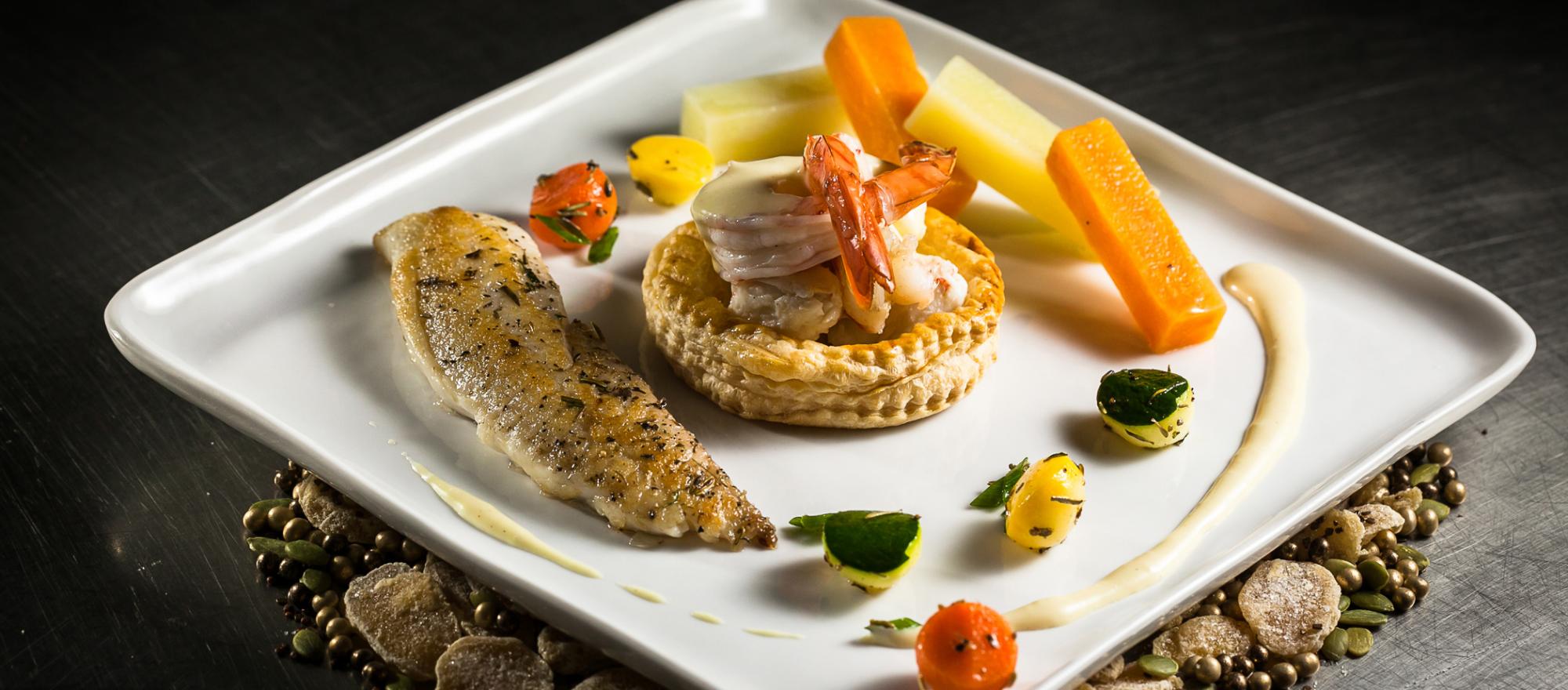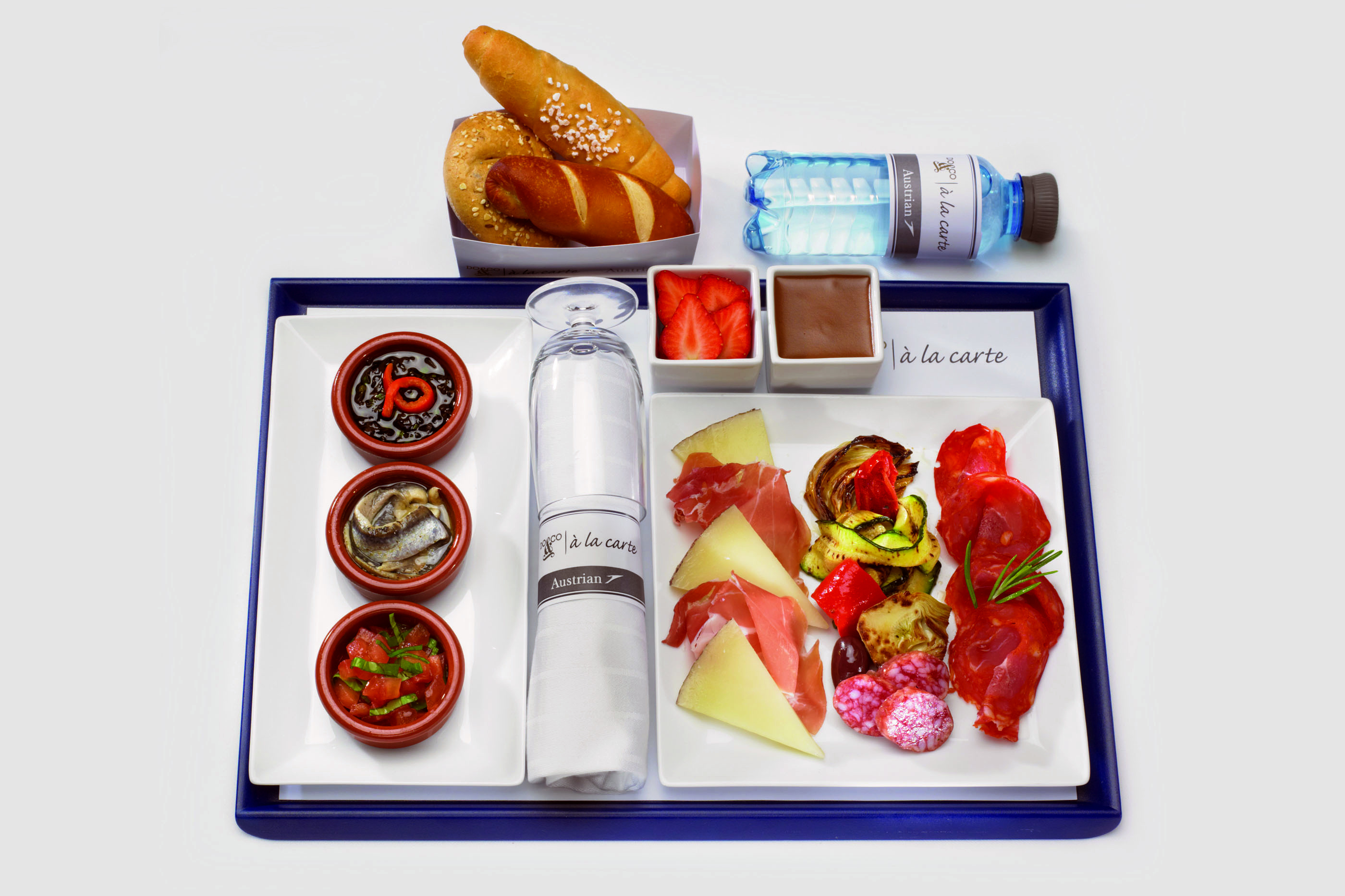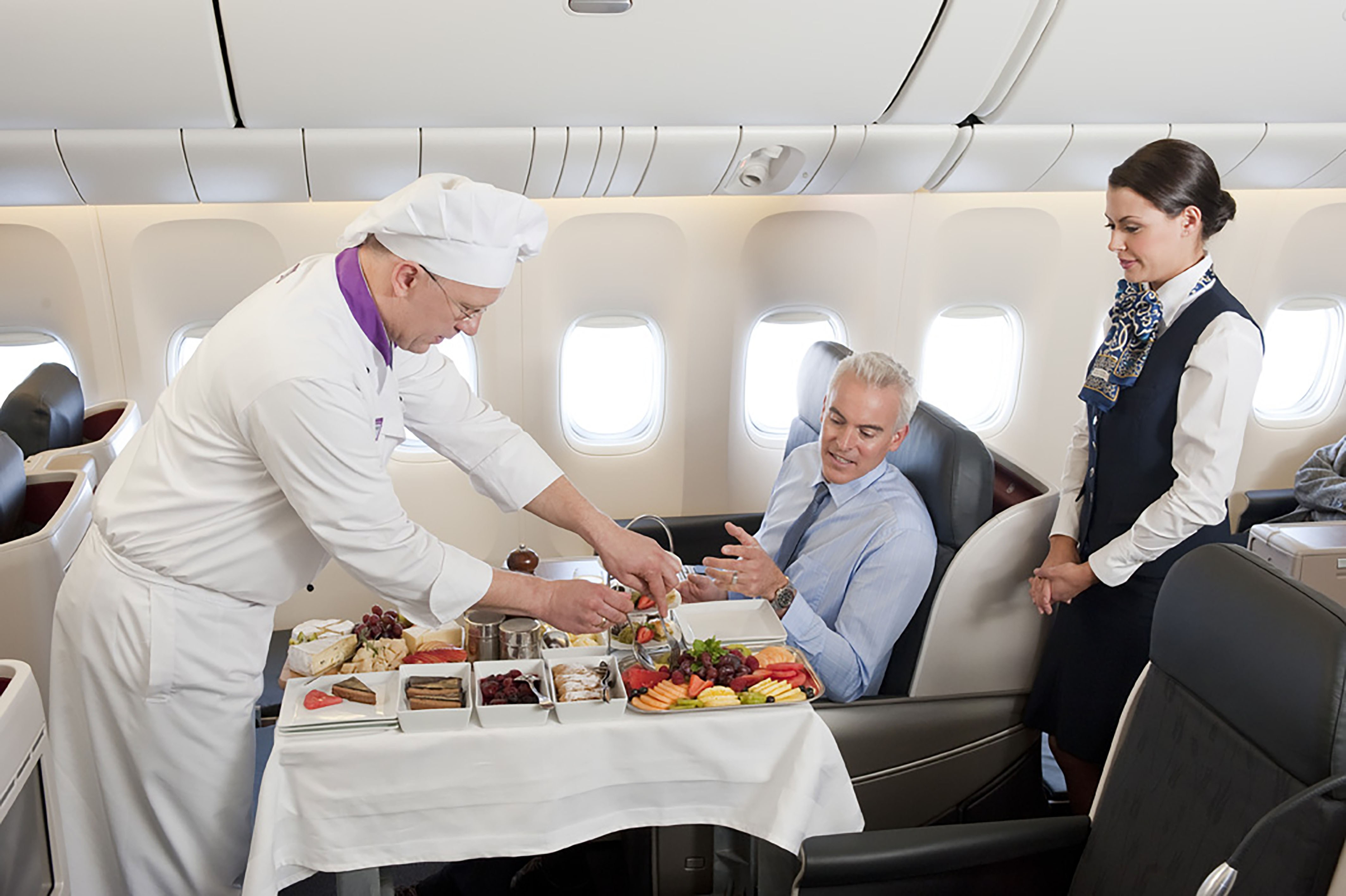Meals on board an airliner are an entire industry and even a special kind of culinary art. It is proved that at an altitude of 10 thousand meters the taste of most products varies significantly. Therefore, cooks who invent and prepare dishes should take this factor into account, as well as show imagination and skill in menu development, so that passengers not only feel the taste of food, but are also satisfied.
As a rule, when ordering a private plane, the traveler can express any wishes regarding the preparation of the onboard menu, including orders for food and drinks from the best restaurants in the city, diet food and many other options. However, in the event that the customer did not give any direct instructions regarding the volume and composition of the menu, the flight organizers compile it themselves, guided by some generally accepted standards.
The principles of making an onboard menu for passengers are completely different than, for example, when developing a menu for crews of the same vessel. Here, much will depend on the preferences expressed by travelers when ordering a charter flight, or on food traditions characteristic of the region from which the flight departs. But the specialist always has the opportunity to adjust the menu selection in such a way as to make the trip as comfortable and stressless as possible.
Central Jets describes the general principles of business aviation catering.

What are the general principles of the on-board menu?
When choosing in-flight catering in business aviation, especially during long-haul flights, you must first find out: how do passengers plan to use the time they spent on board? Are they going to devote it to relaxation and rest or work? In addition, an important factor is - is their active intellectual activity, such as participation in business meetings, awaiting them immediately upon arrival at their destination?
The correct choice of products in such cases will allow you to keep your mind alive and working even after a long flight. The change of time zones, the time of departure and arrival should be taken into account in order to properly distribute the amount of food between the conditional "breakfast" or "dinner" on board.
How do food choices affect brain activity?
If there is a night flight, during which most passengers prefer to sleep, a dense, high-carb dinner with a side dish of pasta, pancakes, and fritters will contribute to a more sound sleep. If the destination is close enough and travelers need to maintain maximum clarity of mind, or they are going to work during the flight, it is better to offer them high protein foods.
At the same time, it is necessary to find out in advance if the customer has any allergies or medical restrictions on any types of products, religious or cultural preferences.

What is the optimal serving size?
According to the recommendations of the US Department of Agriculture, an adult needs no more than 6 ounces (170 grams) of protein foods per day — although most people consume that amount in just one meal. Nevertheless, many catering companies adhere to just such, or similar standards - this explains that, as a rule, the portions offered to passengers in flight will be less than similar dishes in a restaurant.
At the same time, the protein portion of the serving (meat, fish) will be about 170 grams, the vegetable portion (vegetables, cereals) - about 115 grams. Accordingly, the portion plates that are served to you on the plane will be smaller: mostly about 8 inches in diameter, while in restaurants the diameter of a standard dish is most often 12 inches.
A variety of sauces and other additions to food is served in such a way that they fit in a forced confined space, do not fall from a small table and do not interfere with eating. In a word, the size of a portion of onboard power must be sufficient to maintain the energy balance, but not excessive, so as not to put an effect on the passenger to sleep.
? How important is the packaging?

During the trip, the opportunity to order food in one way or another package is often the decisive factor in the preparation of the onboard menu. Different business jets have different cooking facilities, and if a galley is likely to be equipped with a variety of cooking devices on a large plane, small, light business jets do not always have equipment for long-term storage or for heating food. . Therefore, it is necessary to take into account such factors as the size of the galley, the presence of a refrigerator, a microwave oven, some other devices for cooking and heating food. Many charter operators seek to have a stock of standard aviation containers for products in order to receive ordered food from restaurants or catering factories and to heat them in standard on-board furnaces. If the opportunities for cooking are minimal, you will have to be content with canned food and vacuum-packed food that does not require heating.
What dishes can cause a negative reaction of passengers?
Not every traveler is ready to try unusual dishes of exotic cuisine. Many refuse excessively spicy food, too spicy sauces. Therefore, the operators - if the client has not received any special requests - are trying to choose more neutral flavors. For short flights, it usually does not make sense to cook a full meal with a change of dishes, with numerous cocktails, salads, appetizers and main course. It will not only take a lot of time, but will most likely be too heavy for the passenger. This option is more suitable for a long flight. Many seek to avoid products with a high content of starch, as well as too sweet food, causing moon swings.
What are the priorities when choosing drinks?
Natural fruit juices often contain too much sugar, so they can adversely affect the condition of some passengers. It is also not recommended to use carbonated and artificial juice-containing drinks: sweeteners and other chemicals used in their manufacture can stimulate the feeling of hunger. Drinking alcohol in flight can be dangerous: at the altitude at which business jets fly, the effect of alcohol on the human body increases, so it is recommended to be very careful if you decide to drink on board and reduce your usual portion. Experts recommend: for optimal maintenance of water balance in the body, ordinary water is best suited in flight. Or tea with a little sugar and milk.
What set of products will help avoid fatigue from a flight?

To support the general tone of the airline passengers will help foods rich in protein and with a small amount of sugar. To replenish the vital energy, muesli, nuts, and lean beef are recommended. It is better to avoid too sweet and fatty foods: it requires great body efforts during digestion and assimilation, therefore it leads to drowsiness. For example, high-fat potato chips are better replaced with healthier options from beets or other vegetables. A good idea would be to focus on simple, traditional dishes: water, tea, fresh vegetable salads, fish, and avoid eating highly processed foods like sweet soda, cookies.
How do cultural traditions influence on-board dinners?

Passengers from different countries order portions of food of various sizes. For example, people in North America prefer larger portions than Europeans or Asians. There are differences in the ways of serving meals, and in table etiquette. Thus, in some cultures it is required that all dishes be served on the table at the same time, while others prefer that several changes in dishes take place during lunch. Depending on national traditions, cutlery is also used - representatives of different countries can eat the same dish with a fork, spoon, chopsticks or hands.
What other recommendations can you give about the organization of in-flight catering?
Anyone who works in the field of business aviation organization should be well versed in the features of the products used and understand how they can be used most effectively for the needs of business aviation. Flight attendants should make sure that they have an adequate supply of passenger-preferred condiments and various additions to dishes; good selection of quality tea. It is also desirable to have on board a reserve of such products that can be filed with an unexpected failure of kitchen appliances.